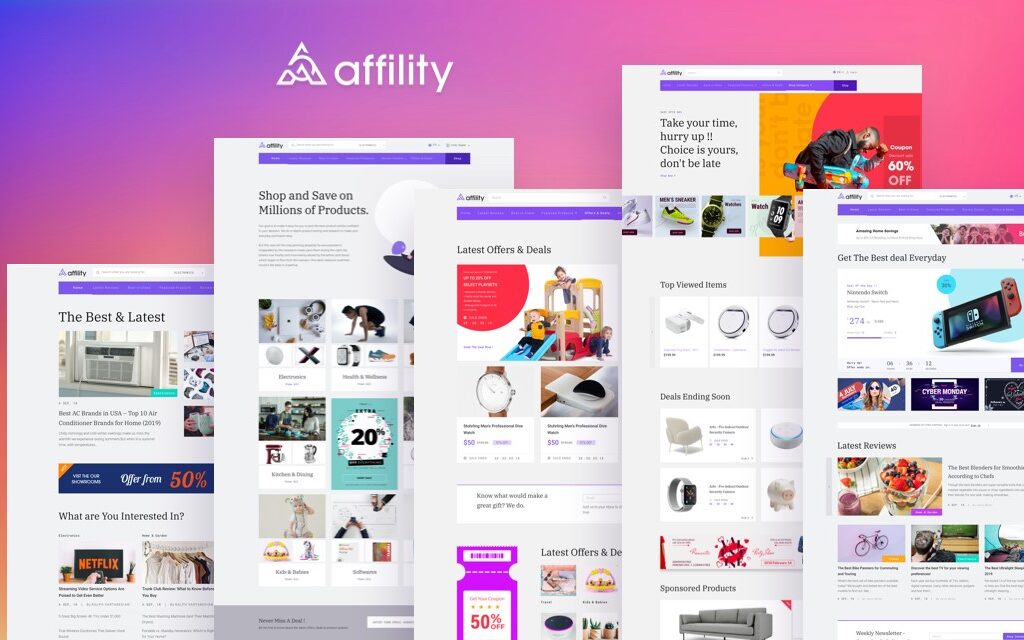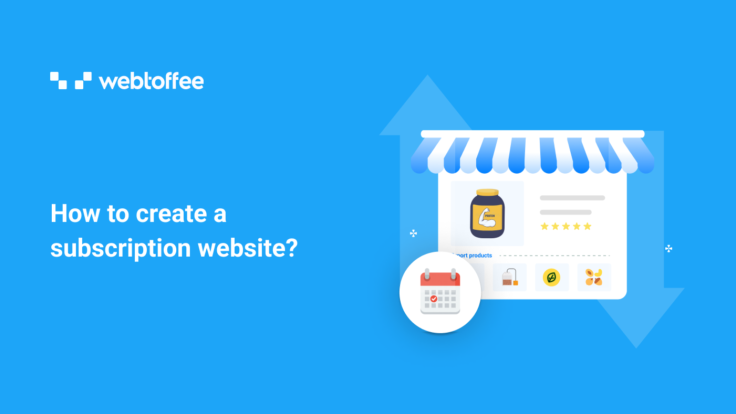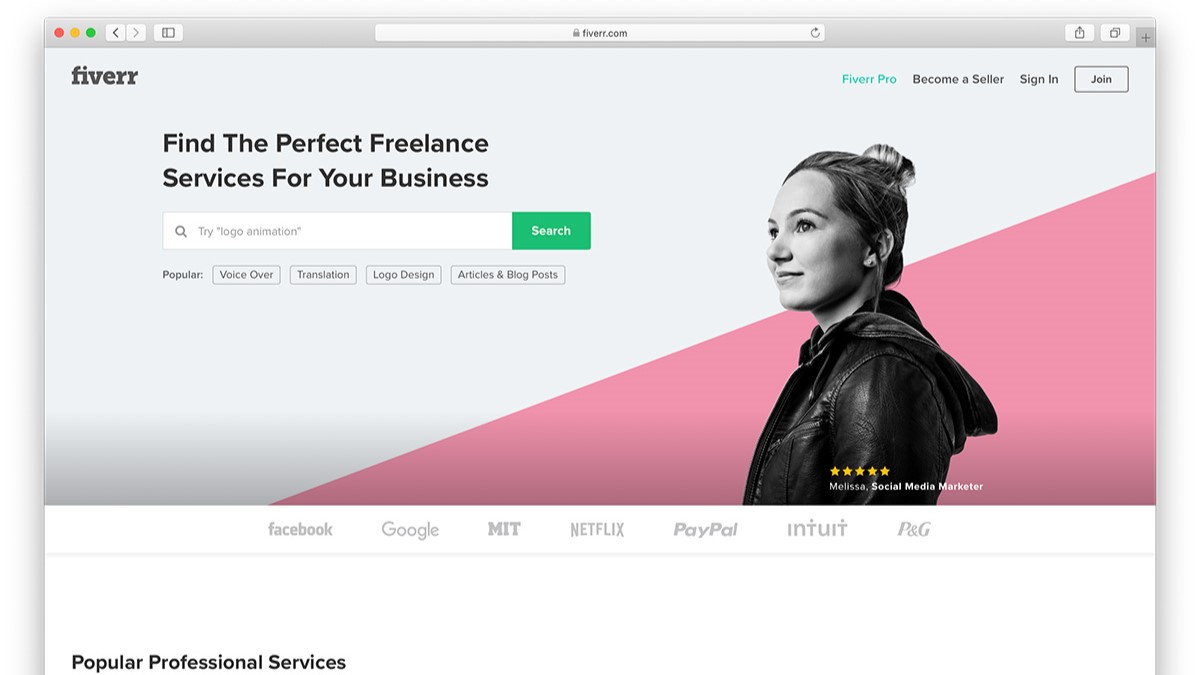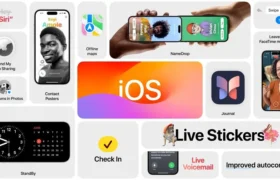Introduction:
In today’s digital era, Website Ideas That Help You Make Money starting an income-generating website has become simpler than ever. There are numerous choices available to you to make money online, whether your objective is to boost your income or create a side business. We’ll look at the top 15 website ideas that can generate income for you in 2024 in this comprehensive guide. We’ll analyze every idea, from e-commerce platforms to highly targeted content websites, providing comprehensive evaluations and practical suggestions to help you realize your online goals.
Table of Contents
E-commerce Store:
The economy of the internet continues to be fueled by online shopping, offering entrepreneurs the chance to sell goods for consumers all over the globe. Starting an online store may be very lucrative, irrespective of whether you choose to use print-on-demand products and services, dropship, or make items from scratch.Simple-to-use systems like Etsy, WooCommerce, and Shopify provide alternatives for setting up your online store fast and effectively.

How to Start an E-commerce Store website Ideas:
Select Your Field of Interest: Pick a niche market for your online store. Think about factors like your hobbies, expertise, the demand in the market, and the competition. Niche industries often have fewer rivals and improve the capacity to effectively reach specific groups of people.
Research Products: Find out which products are in demand in the niche you have selected through market research. Study trends, research the preferences of the audience you are targeting, and evaluate the environment of competition. Seek out new or unique products that set your shop apart from its rivals.
Find Suppliers: After you’ve established what your items belong to, search for reputable manufacturers or suppliers. You possess the option to collaborate with wholesalers, dropshipping providers, or producing your own goods. Build ties with vendors who offer dependable transportation, affordable rates, and high-quality goods.
Select an E-Commerce Platform: create and mantain your online store, click on an E-Commerce platform. the help of Magento, BigCommerce, WooCommerce (which is based on WordPress), and Shopify have become popular choices. When selecting a platform, taking into consideration variables like cost, flexibility, customizing options, and ease of use.
Create Your Store: To set up your store, sign up for the online shopping platform of which you want and follow the installation instructions. Check that the look, feel, and marketing of your store reflect the company you represent. Incorporate product listings with thorough explanations, excellent photos, and pricing details.
Configure Payment Gateways: Set payment gateways up and running so that customers may securely make payments. Most e-commerce platforms are interoperable with popular payment gateways such as Square, for example, PayPal, and Stripe. Check that the payment methods you’ve selected are feasible for your customer base and adhere to whatever regulations are applicable
Affiliate Marketing Website:
Still an important choice for people trying to make money online is affiliate marketing. You may benefit from commission on sales generated via your website by promoting products or services sold via affiliate links. Creating an affiliate site with a specific niche allows you to target viewers and make money from their propensity to buy. To optimize your earnings, think about signing up for affiliate programs with reputable companies in your chosen specialty.

How to Start an Affiliate Marketing Website:
Select Your Niche: Pick a field of expertise that fits the need in the industry, your interests, and your level of knowledge. Take into consideration variables like the size of the audience, profitability, and competition. Niche industries frequently present chances for marketers to successfully target specific clientele and improve the number of conversions.
Research Affiliate Programs: Identify affiliate networks which are appropriate to the niche you have selected. Look into particular store affiliate programs or credible affiliate programs such as Share A Sale, CJ Affiliate, Amazon Associates, and Rakuten Marketing. Assess the marketing programs’ commission proportions, cookie lengths, conditions for payment, and marketing materials.
Create Your Website: Select a web hosting company and domain name for your affiliate marketing website. Pick a platform that’s simple to use such as Squarespace, Wix, or WordPress for building and modifying your website. Install essential plugins, including those for internet search optimization.
High-quality content creation: if you want to attract interest in those who are important to you and persuade them to make purchases on affiliate links. Write informative blog fragments, product reviews, tutorials, comparative guides, and other kinds of written material that speak about the passions, needs, and pain points of those who read your content. Automatically include affiliate links in your content to boost relevance and encourage sales.
Increase Traffic: Put advertising strategies into effect to increase traffic to your website for the affiliate marketing company you run. Make advantage of both paid and natural traffic sources, such as PPC (pay-per-click) advertising, influencer partnerships, social media marketing, email marketing, content advertising, and optimization for search engines (SEO). Prioritize drawing in those visitors that are likely to result in leads or sales for affiliates.
Blogging and Content Monetization:
Blogging entails frequently creating and disseminating content on a particular subject or specialty. Articles of incorporation instructions, tutorials, reviews, and more may all be deemed content. Once your website has gained an engaged audience, you’re able to financially support it using a variety advertising methods, such as:

Display Advertising: Use advertising networks like Media.net’s or Google AdSense in order to display advertising on your blog. According to impressions of ads and clicks, you get paid.
Affiliate marketing: Make money through the sale of products and services related to the topic of your blog. You get a commission for every purchase or suggestion made via your affiliate links.
Sponsored Content: Collaborate with companies or names to provide sponsored articles or reviews. In return for promoting their products or services on your website, you get paid. Sell Digital Products: Produce and market digital products to those who are your audience, such as e-books, online courses, templates, or exclusive material.
How to start blogging and monetizing your content:
Select a topic or specialization that makes you passionate and knowledgeable about.
To set up and maintain your blog, choose a platform for blogging like Medium, WordPress, or Blogger.
Produce fascinating high-quality material which helps the audience you are targeting. To draw visitors to your blog, use email marketing, social media advancement, SEO, and networking.
Try out different monetization methods and modify your strategies as you react to the tastes and behavior of your audience.
Online Courses and Digital Learning Platforms:
Learning platforms and internet-based programs allow people to develop and market educational content to a global audience of customers. Anyone can make money from what you know by creating and marketing online courses, irrespective of whether you’re a specialist in a certain area or have specific knowledge to impart. This is how to begin:

How to start online courses and digital learning platfroms
Identify Your Expertise: Determine the knowledge or skills you possess that you can impart to another. Examine which topics fit into your field of specialization and are in demand.
Make a Course Plan Content: Explain the lessons, sections, assignments, substances, and overall arrangement of the course you are offering online. Make sure that the content in the course is valuable and aids pupils in reaching what they want.
Select a Platform: To host and market your courses, decide on an online learning platform. Udemy, Teachable, Thinkific, and Skillshare are some of the well-liked choices. Assess features, cost, and intended market when picking a platform.
Create a Course: Provide digital resources, talks, examinations, and instructional videos as the course content. Offering captivating and dynamic data is the key for sustaining learners’ enthusiasm and engagement.
Market Your Course: Use an assortment of venues to spread the word regarding the course you are offering online, including collaborations, social media, email marketing, and content advertising. To draw in prospective pupils, emphasize your course’s advantages and value that they offer.
Improve Your Course: Keep an eye on it at all moments and make the necessary modifications based on comments from students and achievement statistics. To increase classroom effectiveness and satisfaction among students, refresh content, respond to learner problems and to enhance the learning experience.
Membership Websites and Subscription Services:
Paying members gain access to exclusive materials, goods, or amenities on a recurrent basis via subscription websites and subscription-based offerings. Member sites may create a sense of family among members and create recurring revenue, whether you provide personalized coaching, participation in online communities, or premium documents.

How to start membership websites and subscription services
Describe Your Offering: Choose the special services, goods, or important that members are going to get. Identify who your intended audience is while learning about what they like and wants.
Select a Platform: Choose an application or subscription platform for establishing and maintain your membership website. WordPress membership plugins like Paid The memberships Pro or Memberful, as well as Patreon, which Substack as and Member Press have their options.
Establish Membership Levels: Create subscription plans or levels of membership with different fees and perks. To attract subscription sign-ups, contemplate providing incentives like early entry, discounts, or access to distinctive substance.
Provide Useful Content: Give your members with important, exclusive material or tools that are of the highest grade. Maintain and renew the content periodically to maintain members’ happiness and involvement.
Promote Your Membership: Take the time to advertise your membership website via an assortment of channels, including collaboration, social media, email, and content advertising. Promote the advantages of subscription to entice those who might want to sign up as members.
Offer Exceptional Member Support: Give members of your staff outstanding assistance and customer service. To ensure customer satisfaction and preservation, respond to their questions, grievances, including recommendations as soon as possible.
Freelance Services Marketplace:
The marketplaces for freelancers link consumers and businesses with freelance workers that provide a variety of goods and services like written form, programming, graphic design, internet marketing, and others. You can make money on a project-by-project basis as a freelancer through providing your knowledge and abilities to organizations all around the world.

How to start freelance services marketplace
Identify Your Skills: As a freelancer, establish the services, understanding, and abilities you can give. To stand out in the crowd, evaluate your field of expertise and aptitude.
Make Your Profile: Build a strong profile through demonstrating your talents, expertise, portfolio, and qualifications on independent contractor platforms like Upwork, Freelancer, Fiverr, or Toptal, among others
Bid on Projects: Search over employment advertisements or initiatives that fit your qualifications, then send concepts to potential companies. Personalize your proposals to present your experience, understand the needs of the client, and show them that you can benefit from their endeavor.
Provide High-Quality Work: When receiving a project, deliver high-quality work within the established costing limit and time frame. To establish a solid track record, connect with clients n a productive way, respond to their feedback, and make an effort to go further than what they want.
Develop Your Reputation: Put your energy into creating a solid track record and getting good evaluations and feedback from consumers. To guarantee recurring business and suggestions, provide continuously high-quality work, maintain integrity, and cultivate lasting relationships with clients.
Increase Your Services: In order to satisfy consumer demands and to preserve your competitive advantage, you should always increase the range of your products, abilities, and services. To improve your expertise and understanding as a freelancer, make a purchase in your ongoing training and career development.
Online Consulting and Coaching:
Online coaching and consulting involve providing professional representation, direction, and support to individuals or firms operating in a particular industry or field. As a career advisor, health trainer, or business a strategist, you may work remote and provide virtual mentoring or consulting services for customers.

How to start online cosulting and coaching
Identify Your Niche: Decide on your area of expertise and your intended audience for coaching or consulting services. Define the precise issues or challenges that you can assist buyers in resolving and also the value you offer.
Provide Service Packages: Create offerings or service bundles that clearly outline the parameters for your coaching or consulting involvement, particularly its duration, scope, and deliverable. Summarize the cost, conditions of payment, and the additional advantages or benefits that will be offered.
Create a Professional Online Presence: Use a website or another medium to create a credible online presence where prospective customers can find out about your expertise, experience, plus services. To establish trustworthiness, add case studies, successful client stories, and endorsements.
Market Your Services: Use a variety of systems, such social media, email marketing, content promotion, and networking, for promoting your coaching or consulting services. Establish yourself as a specialist in your field and showcase the achievements that you’ve made for customers.
Provide Free Consultations: Provide prospective customers with inexpensive preliminary meetings or discovery calls in order to talk about their requirements, objectives, and how your products or services could assist them. Make the most of these meetings to develop rapport, prove your competence, and turn prospective into paying customers.
Dropshipping Business:
A online store that uses dropship does not hold inventories for each item it sells. Rather, when an establishment sells anything, it gets it directly from another company and ships them straight to the buyer. This is ways to launch a dropshipping company:
How to start dropshipping business
Select Your Field of Interest: Choose a product category or specialization for your dropshipping company. Take into consideration factors like customer tastes, profit margins, concurrence, and consumer demand.
Locate Suppliers: Look for reliable dropshipping suppliers or wholesalers which carry goods related to the market you serve. In order to ensure a happy customer experience, research the dependability, quality of the goods, shipment schedules, and cost for suppliers.
Create an Online Store: Make a digital shop or website for e-commerce to showcase your dropshipping product. Select a user-friendly online shopping platform such as BigCommerce, WooCommerce, or Shopify to set up and customize your store.
Products: Bring items into your online shop from the exporting vendors you work with. To draw clients and boost business, make sure that the good’s descriptions, images, and prices have all been optimized. To avert stockouts or selling too much, make sure that your stock is accurately managed and that company are in touch with your suppliers.
Promote Your Store: Use promotional strategies to increase the number of visitors and sales to your dropshipping website. To connect with the people you want to reach, use a variety of digital advertising tactics, including influencers relationships, social media marketing, email marketing, content promotion, and SEO.
Handle Orders: Send your suppliers’ order data so they may fulfill the requests that clients make on the dropshipping company you run. To deliver a seamless client experience, making sure that suppliers are corresponded with clearly and that customer orders have been handled promptly.
Print-on-Demand Merchandise:
With the assistance of print-on-demand (POD) products and services, anyone can create and manufacture customized items like cellphone covers, mugs, T-shirts, and more with having to worry regarding inventory or initial expenditures. The information that follows is how to start a printing on demand company
How to start print-on0demand merchandise
Select Your Items: Choose what kinds of items you would like to sell in your print-on-demand business. Think on products and things that are current in fashion and appealing to the demographic you are targeting.
Design: Provide distinctive, appealing designs for your print-on-demand merchandise. For creating unique graphics that connect with those who view them, use graphic design tools or hire an independent designer.
Select a Print-on-Demand Platform: Join with a print-on-demand platform or service provider that offers services for fulfilling orders, printing, including shipping. Redbubble, Teespring, Printify, a and the Printful are some of the well-liked choices.
Establish Your Store: For displaying your printing on demand goods, create a digital shop or e-commerce website. To create and customize your store, choose a platform for e-commerce such as Etsy, WooCommerce, or Shopify.
Upload Designs: Make the listings for every product by uploading your distinctive patterns to your print-on-demand website. Check that product descriptions, pictures, and names are optimized to draw in consumers and increase sales.
Promote Your Products: Employ promotional strategies to get clients to visit your business and raise exposure of your print-on-demand products. To reach your intended audience, make use of influencers alliances, email marketing, content marketing, and social media marketing.
Social Media Management and Influencer Marketing:
To improve an organization or individual’s online visibility and participation, social media management includes handling and enhancing social media accounts and profiles. Working with influencers to promote products, services, or companies to their followers is known as influencer advertising. Here’s how to launch an influencer advertising or social media managing company:
How to start social media management and influencer marketing
Describe Your Services: Select which influencer advertising or social media management services you are going to offer to clients. Take seriously offerings like influencer outreach, campaign administration, handling communities, posting scheduling, creation of content, and profile setup. Select Your
specialization: For the influencer management or social networking management business, decide on an area of expertise or particularization. Focus on sectors in which you are skilled or have experience, but be cognizant of the target market’s features.
Create a Portfolio: Compile a collection of examples that highlights your previous accomplishments, successful campaigns, and client results. Provide examples, advertising, and instances of collaborations between influential people or social media material.
Establish Your Pricing: Select your packages and prices for influencer advertising or social media service management. Take into consideration variables like the scope of the project, the products or services offered, the needs of the customer, and industry norms.
Promote Your Services: Use email marketing, social media, content advertising, networking, and various other methods to connect with prospective clients with your social media administration and influencer advertising services. Highlight your experience, achievements, and special selling point. Develop
Relationships: Keep in contact with business contacts, influential individuals, and potential consumers. To grow your circle of connections and get leads, participate in internet-based groups, attend networking opportunities, and join professional organizations.












Leave a Reply